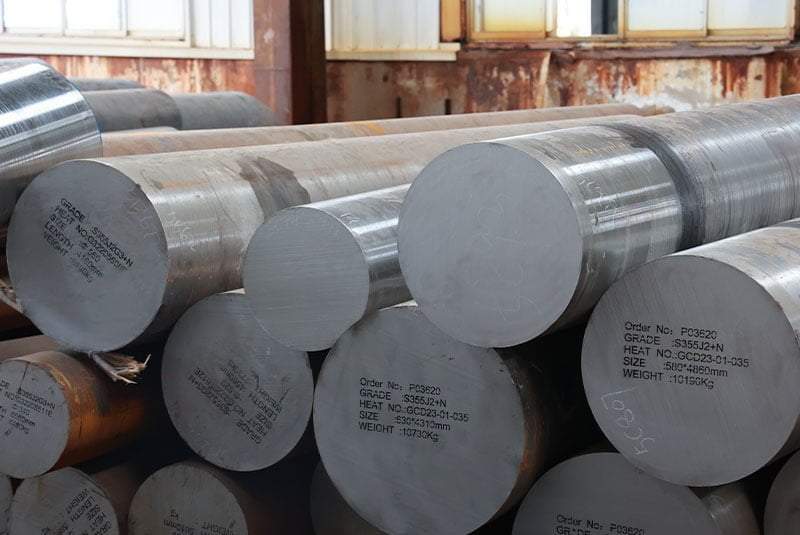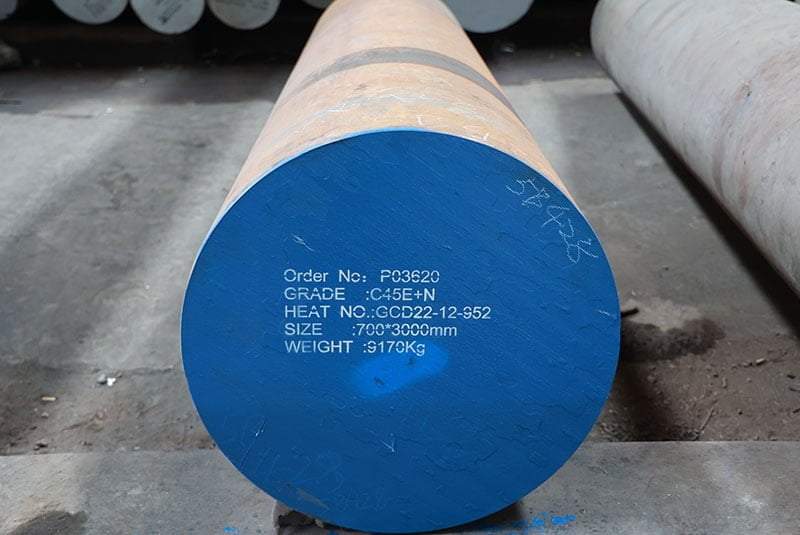Introduction
Carbon steel is a staple material in various industrial applications due to its remarkable properties and versatility. It is an alloy of iron and carbon, with carbon content varying from 0.02% to 2.14%. This simple yet effective composition grants carbon steel its renowned strength, durability, and cost-effectiveness, making it an indispensable material in construction, manufacturing, automotive, and many other sectors. In this comprehensive guide, we will delve into the reasons why carbon steel is the ideal choice for industrial applications, explore its types and properties, and provide insights into its widespread use across different industries.
Understanding Carbon Steel

What is Carbon Steel?
Carbon steel is an alloy primarily composed of iron and carbon, with the carbon content determining its characteristics. The varying amounts of carbon create different types of carbon steel, each with unique properties suited for specific applications.
Types of Carbon Steel
Low Carbon Steel (Mild Steel): Contains 0.04% to 0.30% carbon. It is easy to shape and weld, making it ideal for manufacturing and construction.
Medium Carbon Steel: Contains 0.31% to 0.60% carbon. It offers a good balance of strength and ductility, often used in automotive and heavy machinery parts.
High Carbon Steel: Contains 0.61% to 1.50% carbon. Known for its high hardness and strength, it is used in cutting tools and high-strength wires.
Ultra-High Carbon Steel: Contains 1.51% to 2.14% carbon. Extremely hard and strong, it is used in special applications like knives and axles.
Properties of Carbon Steel
Strength: High tensile strength makes carbon steel suitable for heavy-duty applications.
Durability: Resistant to wear and tear, providing long-lasting performance.
Cost-Effectiveness: More affordable than many other metals, offering economic benefits.
Malleability: Easily shaped and formed, allowing for diverse industrial uses.
Heat Treatability: Can be heat treated to enhance specific properties like hardness and strength.
Advantages of Carbon Steel in Industrial Applications
Strength and Durability
Carbon steel’s high strength and durability make it a preferred material in industries where these attributes are critical. For instance, in construction, carbon steel is used for structural frameworks that must support heavy loads and withstand harsh conditions.
Cost-Effectiveness
Compared to other metals like stainless steel and aluminum, carbon steel is more cost-effective. Its affordability, combined with its strength and versatility, makes it an economical choice for large-scale industrial projects.
Versatility
Carbon steel’s ability to be heat treated and its wide range of carbon content allow for varied applications. From low-carbon steel used in lightweight applications to high-carbon steel used in tools and machinery, its versatility is unmatched.
Ease of Fabrication
The malleability of carbon steel facilitates easy fabrication. It can be cut, welded, and shaped with relative ease, making it suitable for custom industrial applications where specific shapes and designs are required.
Recyclability
Carbon steel is recyclable, contributing to environmental sustainability. The recycling process consumes less energy compared to producing new steel, reducing the carbon footprint of industrial activities.
Industrial Applications of Carbon Steel
Construction Industry
In the construction sector, carbon steel is used extensively for:
- Structural Beams and Columns: Providing the framework for buildings and bridges.
- Reinforced Concrete: Used as rebar to reinforce concrete structures, enhancing their strength.
- Piping Systems: Employed in plumbing and heating systems for its durability and strength.
Manufacturing Industry
Carbon steel plays a crucial role in manufacturing:
- Machinery and Equipment: Components like gears, shafts, and axles are made from carbon steel for their strength and wear resistance.
- Tools and Dies: High-carbon steel is used in making cutting tools, dies, and molds due to its hardness and ability to retain a sharp edge.
Automotive Industry
The automotive industry relies on carbon steel for:
- Vehicle Frames: Offering the necessary strength and rigidity to withstand impacts.
- Engine Parts: Medium-carbon steel is used for making engine components that require a balance of strength and ductility.
- Suspension Systems: Providing the toughness needed to absorb shocks and maintain vehicle stability.
Energy Sector
In the energy sector, carbon steel is essential for:
- Pipelines: Transporting oil, gas, and water due to its ability to withstand high pressure and corrosive environments.
- Oil and Gas Rigs: Structural components of drilling rigs are made from carbon steel for their durability and strength.
- Power Plants: Used in boilers, turbines, and other critical components for its heat resistance and strength.
Table: Comparison of Carbon Steel Grades
| Grade | Carbon Content (%) | Key Properties | Common Applications |
|---|---|---|---|
| Low Carbon Steel | 0.04 – 0.30 | Ductile, easy to weld and shape | Construction, automotive panels, pipelines |
| Medium Carbon Steel | 0.31 – 0.60 | Balanced strength and ductility | Automotive parts, machinery, rails |
| High Carbon Steel | 0.61 – 1.50 | High hardness and strength, less ductile | Cutting tools, springs, high-strength wires |
| Ultra-High Carbon Steel | 1.51 – 2.14 | Extremely hard and brittle, high strength | Knives, axles, special tools |
Factors to Consider When Choosing Carbon Steel

Project Requirements
Evaluate the specific requirements of your project, such as the needed strength, durability, and resistance to environmental factors. Choose the appropriate grade of carbon steel that meets these criteria.
Cost Constraints
Consider the budget for your project. While carbon steel is generally more affordable than other metals, different grades come with varying costs. Balance the cost with the performance requirements to make an economical choice.
Environmental Conditions
Assess the environmental conditions in which the carbon steel will be used. For example, high-carbon steel is suitable for applications requiring high wear resistance, while low-carbon steel is better for environments where ductility is essential.
Fabrication Needs
Consider the fabrication process required for your project. Low-carbon steel is easier to shape and weld, making it suitable for custom designs and applications that require extensive fabrication.
Longevity and Maintenance
Evaluate the expected lifespan and maintenance requirements of the carbon steel in your application. Choose a grade that offers the necessary durability and ease of maintenance to ensure long-term performance.
Conclusion
Carbon steel‘s exceptional properties make it the ideal choice for a wide range of industrial applications. Its strength, durability, cost-effectiveness, and versatility allow it to meet the diverse needs of industries such as construction, manufacturing, automotive, and energy. By understanding the different types of carbon steel and their respective properties, you can make informed decisions that enhance the performance and efficiency of your projects. Whether you require the ductility of low-carbon steel or the hardness of high-carbon steel, carbon steel remains a reliable and invaluable material in modern industrial applications.
FAQ
What are the main advantages of using carbon steel in industrial applications?
Carbon steel offers several advantages, including high strength, durability, cost-effectiveness, versatility, ease of fabrication, and recyclability. These properties make it suitable for a wide range of industrial applications, from construction to manufacturing.
How does the carbon content affect the properties of carbon steel?
The carbon content in carbon steel determines its properties. Low carbon content results in higher ductility and ease of fabrication, while high carbon content increases hardness and strength but reduces ductility. Choosing the right carbon content is essential for meeting specific application requirements.
Can carbon steel be recycled?
Yes, carbon steel is recyclable. The recycling process consumes less energy compared to producing new steel, making it an environmentally friendly option. Recycled carbon steel retains its properties, making it a sustainable choice for industrial applications.
What are the common applications of low carbon steel?
Low carbon steel is commonly used in construction for structural beams and columns, reinforced concrete, and piping systems. It is also used in the automotive industry for vehicle frames and panels, and in manufacturing for making various components and equipment.
How do I choose the right grade of carbon steel for my project?
To choose the right grade of carbon steel, consider the specific requirements of your project, including the needed strength, durability, environmental conditions, fabrication needs, and budget. Assess the properties of different carbon steel grades to determine which one best meets your needs.
